Arts
Dazzling Success

Indians have displaced Jews for the diamond crown of the world.
|
Once small farmers in the villages of Gujarat, they now harvest diamonds.
And what a bumper crop it is! Almost 80 percent of the world’s polished diamonds pass through the hands of Indian merchants, some of whom are among the biggest players in the multibillion-dollar diamond business. These merchants of dreams create the sparkling diamond rings, solitaire earrings and wedding bands that initiate couples into wedded bliss; they are the ones who craft the jeweled baubles that celebrate every joyous occasion. For Indian diamond merchants, many of whom are the descendents of farmers from Palanpur and Kathiawar in Gujarat, the whole world has become their beat. The diamond-paved city of Antwerp is a second home to them, as is the bustling diamond district of New York. Hong Kong, China, Vietnam, Russia, Sri Lanka and Canada are all extensions of their factories and workplaces and their glittering crafts are found in retail emporia around the world. Today, India’s total export of gem and jewelry to the United States alone stands at $6.2 billion, and Indian goods account for over two-thirds of the total volume of retail jewelry sold in the United States. In fact, the Indian company Rosy Blue is one of the largest customers for rough diamonds from the diamond giant De Beers, which controls 60 percent of the world’s supply. At least six Indian companies make up the top ten De Beers clients.
Other major companies that have a presence on several continents apart from Rosy Blue, are Eurostar, Emby International, Vijay Diamonds, Disons Gems, Paras Diamonds, and Shivani Gems. The Lakhi Group, another major player in the industry, entered the media limelight when Dilip Kumar Lakhi became the highest individual taxpayer in India in 2003. The Lakhi family, probably the only Sindhi family among the big players, started out modestly in Jaipur as traders in precious stones and then moved into manufacturing. Today the five brothers have expanded the family business to several companies, and Prakash Lakhi heads Vishinda in New York. The Lakhi Group is one of the largest exporter of diamonds from India and has perhaps the world’s largest diamond polishing factory in Surat, with over 6,000 workers under one roof. Nor are Indian diamond merchants, a low profile crowd if ever there was one, blowing their own trumpet. The Wall Street Journal did it for them recently, noting that in Antwerp, the Indians’ share of the $26 billion-a-year diamond revenues had risen to roughly 65 percent from about 25 percent just 20 years ago. The Jewish share had fallen to 25 percent from 70 percent. Idex, the magazine of the International Diamond Exchange, published from Israel, also recently ran an article titled “India’s Dazzling Secrets.” While estimating that India produces 50 percent of the world’s polished diamond consumption by value and 80 percent by weight, the article notes that the Indian industry alone imported some 129.3 million carats of rough diamonds last year: “India has become financially probably the strongest manufacturing sector and its largest companies are among the fastest growing conglomerates in the world.”
Indians, of course, have a very old connection with diamonds. In fact, the Museum of Natural History in New York showcased a landmark exhibition of diamonds recently, noting that the first diamonds were mined in India. The earliest known hreference to diamonds is in a Sanskrit manuscript, the Arthasastra by Kautiliya, a minister to Chandragupta of the Mauryan dynasty. Diamonds were discovered in India in the 4th century BC and except for a minor supply of diamonds in Borneo, India was the world’s only source until the 1730s. The diamond mines of Golconda were legendary, but gradually rich deposits were discovered in many other countries. Today the Majhgawan pipe near Panna is India’s only diamond producing source, and now the hot spots for mining have shifted to Australia, Sierra Leone, South Africa and Canada. Ever the innovators, Indians have taken on a new role: banking on skilled hands and eyes and enterprise, they have become the most prolific diamond polishers in the world! “The largest exporter of polished diamonds is India and Israel is second,” says Basant Johari, the president of Indian Diamond and Colorstone Association in New York. “India exports by value about 50 percent of the world’s production, and by quantity over 80 percent in carats. If you look at the number of stones, India produces ten stones out of every 11 stones.” Apart from the skill, Johari explains, there is a very big difference in the price structure of labor in India, as compared to Israel or the United States. In India, the rough diamonds come from either De Beers or traders who buy in the open market in Antwerp, and to a certain extent even from New York and other places in the world, including the Argyle Mines in Australia. So, not surprisingly, Indians have become entrenched in Antwerp, which is the hub of the diamond trade with four diamond exchanges.
Dilip Mehta, who is based in Antwerp, is one of the biggest players. He is the CEO of Rosy Blue, a global company that had net sales of $1.25 billion last year, with offices or factories in 14 locations employing15,000 people worldwide. It is the biggest exporter of polished diamonds from India, but its dealings have spread across continents. When this writer conducted a long interview with Mehta in Antwerp via his cell phone on a Sunday, he constantly and politely terminated other calls, but he did attend to one pressing matter. It was the demands of his little granddaughter, insisting he untie a balloon. The lines from Europe to America crackled, as things came to a halt while he patiently attended to this important task. And that somehow sums up one of the big hidden strengths of India’s diamond merchants: their strong family ties. Whether in manufacturing, buying or selling, Indian diamond merchants have a strong family support system and many willing hands. In fact, the majority of the businesses are family-owned, and certain names like Mehta, Shah, Jhaveri and Patel dominate in the diamond industry. Many of them hail from Palanpur, a small town in Gujarat, and Palanpuris initially controlled the diamond trade in India. In the late 70s and early 80s, they accounted for 85-90 percent of the Indian trade.
They are still the main component of the diamond industry, especially in buying and selling, but lately, Kathiawaris, hailing from Saurashtra in Gujarat, have become active in the actual cutting and polishing of diamonds, already accounting for about 30-40 percent of the Indian industry. “We grew up seeing diamonds and emeralds right from birth,” says Johari, who came to New York in the 1980s. “My father, grandfather, great grandfather were all in the same business. In India, people work also at home, so it’s like a 24-hour job.” Johari, who is a Vaishnav from Benares, recalls that his family used to do business with the royals, who sometimes bought, but mostly sold jewels, as their financial status dictated. Jivraj Bhai Surani, founder of JB Diamonds Group, is one of the prominent Kathiawari diamond dealers. The business started back in 1963, with the family actually doing the polishing. Surani, who is a past president of the Surat Diamond Association and co-convener of the Gujarat Gem and Jewelry Export Promotion, lives in Surat, but for him, as for most of the diamond merchants, New York is just a flight away. Surani’s brothers are in Antwerp and Hong Kong, and his son heads the New York office. The JB Diamond Group has factories in India, China, Thailand and Hong Kong. Says Surani, “I have three boys all in the business, but years ago my family were farmers in Bhavnagar.”
“Even by the standards of lavish Indian marriage ceremonies, the weekend double wedding of Vishal and Priya Shah, son and daughter of Vijay Shah, one of the biggest diamond dealers in the world, has set a new benchmark for opulence and innovation,” gushed The London Telegraph. “For a few days Antwerp, the world’s diamond trading center, has became a Bollywood fantasy at an estimated cost of £10 million ($18 million).” Weddings are, of course, a sacred cow in the Indian ethos where no expense is spared, but generally diamond merchants have kept a very low profile even as they’ve become a major force in the industry. Simple lifestyles, family togetherness and a vegetarian diet are their credo. Currently, Indian-origin companies control 55-60 percent of the Antwerp trade, but not all of the polishing is done in India. Indian merchants are diversifying their operations to far-flung places in South East Asia, Russia and Armenia, thus expanding their base, as the diamond industry seeks out low cost areas for manufacturing. “Indians had the flexibility and the ability, and because of their geographic situation and big families, they could put people all around the world. Their business grew much more as compared to the other communities,” says Mehta.
How well do the Indians interact with the Jewish merchants in Antwerp? Says Mehta, “The diamond community is made up of all cultures; you have the Jewish community, the local Flemish people and quite a few Lebanese and the Armenians. Then you have the Chinese, Koreans and Japanese. The industry really is a melting pot of various cultures so it works very well. They all have common interests – to grow the business and prosper.” This commonality of business interests has motivated the two communities – who are both very strong on family values, hard work and religion – to learn to co-exist in the business. Jewish and Indian business organizations often honor each other’s community leaders or invite them to sit on their boards of directors. Indian merchants often donate to Jewish causes, and after the Gujarat quake took place, Jewish dealers also chipped in. According to the Wall Street Journal, the polishing costs in India are 80 percent lower than in Antwerp, and until recently the Jewish merchants polished and cut the diamonds locally. Indians also had another point in their favor, for as the Journal notes, they “also proved canny at polishing and cutting the lower-quality rough diamonds that Jewish traders typically overlooked, squeezing higher profit margins than thei Jewish competitors and pumping the profits back into their businesses.”
The Journal noted: “While the Jews try to stem their decline, the Indians are demanding that their influence in the Antwerp diamond world mirror their economic might. They want better representation on Antwerp’s High Diamond Council, the powerful body that regulates the city’s diamond industry.” Amal Jhaveri, a past president of IDCA and president of sales and marketing at Sugem in New York, says: “We are competitors, but we are all working together in many different ways. We are all born businessmen, so we’re going to do business; but there is enough place in this business for everyone.” When the IDCA was formed 17 years ago, there were just 65 member companies, but today it has over 300 member companies that participate in shows in New York, Las Vegas, Tuscan (Arizona) and Orlando. As Indians have streamed into the diamond business, they have become a sizable presence on 47th street, the nerve center of New York’s bustling diamond district, stretching between 5th and 6th Avenues. In recent years, as more players have entered, the district has spilled into neighboring streets and avenues too. Amidst the hustle and bustle of retail jewelry shops on the street level and in the vaulted offices above them, are probably an ocean of diamonds. Security has been beefed up dramatically in these buildings, especially after 9/11, but tenants can remember bygone times, when there were muggings and break-ins. Traveling salesmen, laden with gems, still have the occasional hold-up in Atlanta or Puerto Rico, but the business has become fortified. Jewelers rarely carry the gems on their person, sending them ahead by special couriers who cater to the diamond trade.
“There have been a lot of changes. The business has changed step by step, quite dramatically,” says Rajshekhar Parikh of Renaissance Gems, who came to the United States in 1975. “Each year it has continuously changed, the way things are done. When we came, we used to sell to the Jewish wholesalers. Then we started selling to retailers and went into jewelry manufacturing. There has been a shift and the dominance of the trade has become much larger.” Sometimes, outside factors help too. Parikh explains that since the U.S. Government eliminated duty on Indian jewelry, the industry has expanded. “It’s a combination of many things which are giving a push to this business.” Indian diamond merchants are trading in everything from large stones to colored stones, from semi-precious to smaller goods; they are even doing the actual setting and manufacturing here for clients, and have even branched out into gold for the U.S. consumer. Over time, Indians are becoming more market savvy and catering to the demands of the American consumer. Says Johari, who heads Dow Gems, which specializes in loose diamonds: “All the items are geared to the American market and if you go to major stores like JC Penneys, Macy’s, Sears or Walmarts, or retail jewelry chains like Zales, K Jewelers or Litmans, most of the jewelry you see is through India.” In fact, even if the merchandise is actually from China or Bangkok, most is being supplied through India and the diamonds are passing through Indian hands. Johari’s jewelry division, Kuber Inc., for instance, is manufacturing the bulk of its merchandise right here while some of it is done in Bangkok, China and India. It may sound intriguing to hear that jewelry manufacturing is actually being done in the United States, but as Johari explains, “Anything which is labor-intensive will go out, because labor is cheap overseas, but other items are finished here. Americans, Armenians, even Indians are running contracting factories with Chinese, Indian, and Spanish workmen who do the setting and finishing right here.” Of the entire American consumer market, the bridal business is the biggest and includes wedding bands, engagement rings as well as jewelry for anniversaries. Larger stones of a carat to three carat still come largely from Israel and Antwerp, and the proportion of Indians selling such stones, though growing, is still small. To the uninitiated eye, the grading of diamonds can be bewildering, but there is a fine science to it as the stones are calibrated for cut, clarity and color. If you have a diamond certified from the Gemological Institute of America, and take the stone back to them five years later for re-evaluation, chances are you will get the exact same report. Interestingly enough, India itself is becoming a lucrative market for the sale of big diamonds and diamond jewelry, earlier reserved just for the wealthy. Explains Johari, “In India the middleclass has been growing and there has been a shift away from gold jewelry so the market for diamonds has grown.” So what is the secret of the Indian success in the global marketplace?
Says Amal Jhaveri: “They are business oriented from birth. It’s in their blood. The reason for their success is that they change according to the times. Where the wind is blowing, they blend. We are very low-profile people – in any community, anywhere we blend.” They have a manufacturing base of various products and distribution is well established with operations that are over 25 years old. Explains Mehta, “These are very mature operations focusing on local competition, rather than just worrying about being better than your fellow Indians. That policy has helped us very well so that one thinks global and acts local.” Rather than just relying on family, the company has encouraged outside talent. “We started making that change in the late 70s because one realizes that you cannot always produce capable children. We’ve been very lucky so far; sometimes it actually makes sense to have professionals as they bring new insights. Today all our operations are very competitive in their own areas and their own regions.” Dilip Mehta believes there is a need for all this activity since the stockpiles of rough diamonds have diminished considerably with all the mining companies, including De Beers. “Everybody has working stocks and that’s created a lot of anxiety amongst the diamond people in the world, and all of them are trying to secure supplies from wherever they can. They are looking for all the opportunities of business.” Indians have also been moving on to new pastures, to bigger diamonds. Earlier they were mainly dealing with lower qualities, but are now producing predominately middle quality diamonds, sizes up to 2 carats. About five or six cutters in India are also producing larger, high quality diamonds. Indians in the industry are agile in adapting to the times. “People have moved on and the interesting thing is that we’re talking about people like us who had just a high school education and no formal training,” says Dilip Mehta. “And now how things have evolved! We trained ourselves over a period of time and now with the younger generation, more focused and more educated, coming in, it’s making a difference big time. Indians are doing just about everything and they are in the true sense business houses now.” |

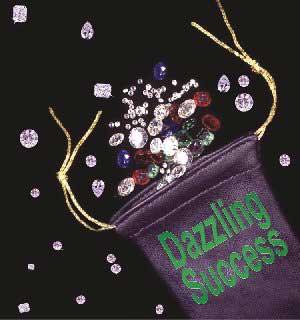
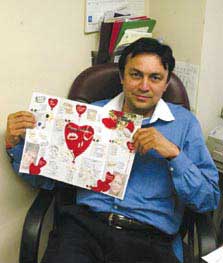
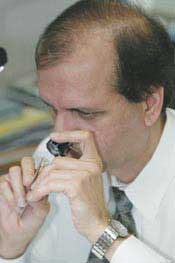

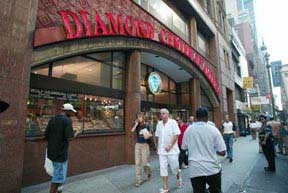

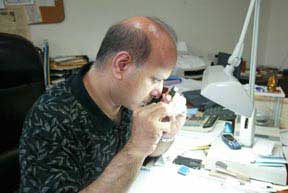
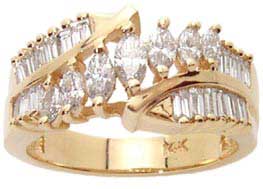
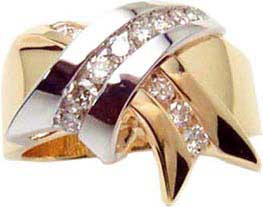
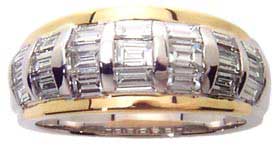
You must be logged in to post a comment Login